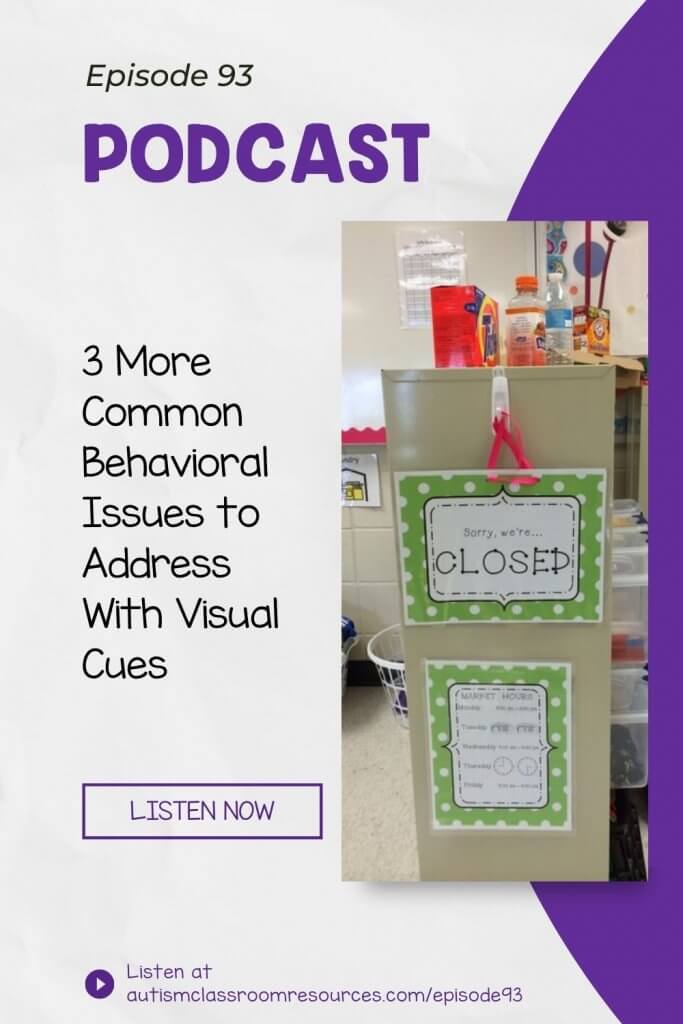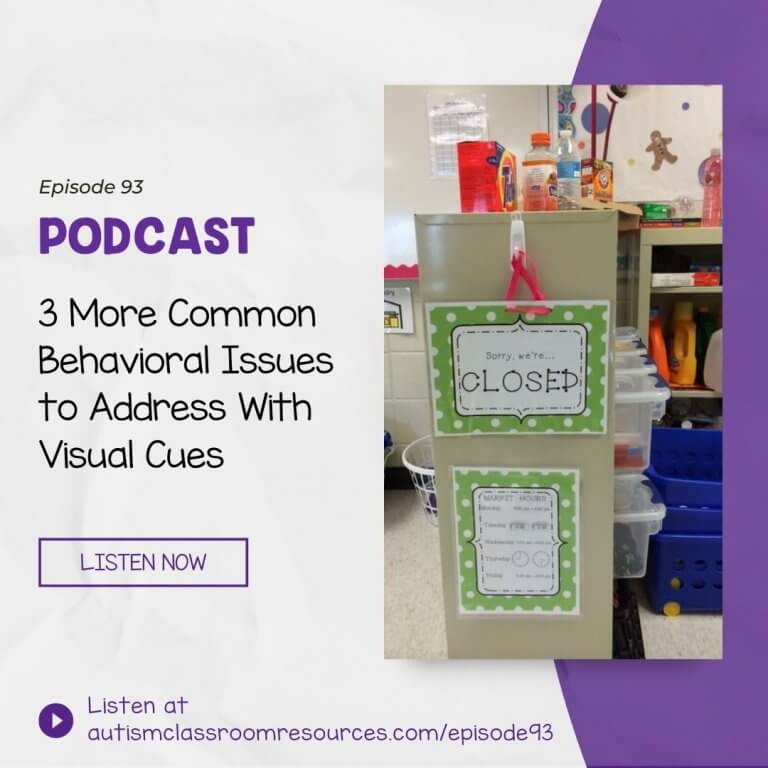Welcome to the Autism Classroom Resources Podcast, the podcast for special educators who are looking for personal and professional development.
Christine Reeve: I’m your host, Dr. Christine Reeve. For more than 20 years, I’ve worn lots of hats in special education but my real love is helping special educators like you. This podcast will give you tips and ways to implement research-based practices in a practical way in your classroom to make your job easier and more effective.
Welcome back to the Autism Classroom Resources Podcast. I’m Christine Reeve, and I’m your host. Thanks for joining us.We are talking about troubleshooting behavior in your classroom setup. Right now, we are talking about behaviors that we can address by tweaking visual supports. I’m giving you a series of little snack sized episodes because I know there is just no time at this time of year, or really, any time of year. I’ve got a free download for you this week to implement some of the solutions, so let’s get started.
If you find that your students or your staff aren’t cleaning up their materials at the end of an activity, it might be that they aren’t sure where things need to go. To help get them into the routine of cleaning up, use visual cues that they will understand; pictures, if they aren’t readers, and sometimes even if they are, on cabinets and shelves to show where things go. That also makes them easier to find and it makes it more likely that they will go back where you want things to be. Do you have a student who keeps repeating an activity over and over without completing it? It might not be that he’s perseverating. Sometimes you can solve this by giving them a clear place to put the completed item like a finished table or a finished basket, just like we use in independent work.
Next up—I feel like I’m in a lightning round—do you have students who are constantly going or asking to go to areas of the room or activities that are off limits or not available? Put an X or a closed sign or a finish sign on the entry to the activity or the material itself. You can use a stop sign as well to show that it’s off limits right now. Sure, there may be a student who comes over to the computer, takes the finish sign off, and tries to use it, but many or most will actually follow the sign. You could also use a clock with a time on it of when that area will be open. I’ve got a free finish sign and stop sign for you in the Free Resource Library at the blog post. Go to autismclassroomresources.com/episode93 and grab it.
Next up, do you have students who are constantly distracted by other things in the room rather than the work that they’re supposed to do or focusing on the teacher? Before we decide that it’s just that the student is distractible, let’s check our environment. Because remember, we don’t want to blame the student for a problem that we can address and we have limited solutions if we decide the problem is the student. Review the visual materials in the room and make sure that they are functionally related to your instruction. If you have extra visual stuff that doesn’t have a purpose, consider whether or not it could be distracting. Not every student is going to be distracted by materials hanging from the ceiling, so don’t get caught up in the no-hanging-from-the-ceiling can ever happen in a classroom for students with disabilities, or lots of material on the walls.
But even students without attention deficit disorder might be distracted by too much stuff on the walls or some things blowing in the fan of the air conditioner. Consider having another person from outside your class come in and maybe give you some feedback about your room and see what they think. Because it’s really hard to see all the stuff in your room when you spend all day in it. It’s good to get a different perspective. That can be really, really helpful.
Now, make sure that you hop over to autismclassroomresources.com/episode93 and grab your free stop and finish sign and a transcript of this episode and other links. If you’re looking for more individualized help and support in setting up and working with students with disabilities, come try a seven-day free trial of Special Educator Academy. We have a whole course on setting up classrooms and lots and lots of different trainings to help you train your staff, to help you with all different types of strategy. We have tons of resources for teachers just like you. As always, thank you so much for listening. I hope you’ll come back next week when I’ll be addressing things that you can affix by adjusting your schedule. Until then, I’ll just be sitting here wondering what visuals in my office might be distracting me.









